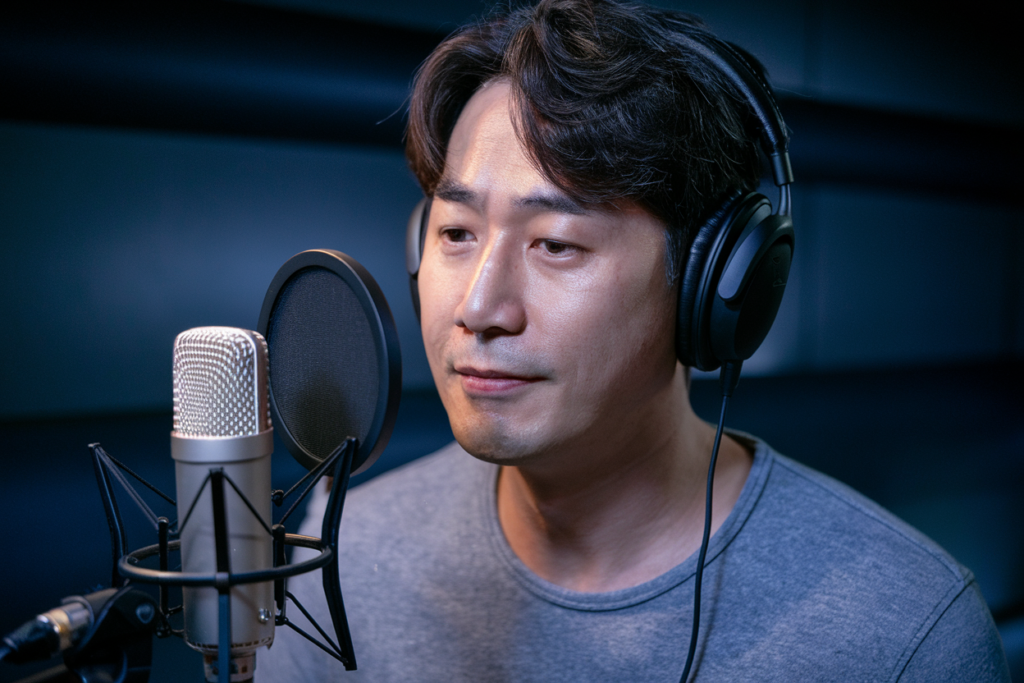Key Takeaways
- Understanding Language and Culture: Effective Korean subtitles require not only translation but also a grasp of the cultural nuances to convey meaning and emotion accurately.
- Importance of Accuracy: Accurate subtitling is crucial for clear communication, ensuring viewers understand dialogues and cultural references without confusion or misinterpretation.
- Challenges in Subtitling: Korean subtitling involves unique challenges such as complex sentence structures and timing synchronization that require language proficiency and cultural familiarity.
- Utilizing the Right Tools: Choose from various software options like Aegisub or Adobe Premiere Pro, as well as online services like Rev.com or Kapwing, to streamline your subtitling process effectively.
- Best Practices for Engagement: Focus on timing, consistent formatting, and style guidelines to enhance readability and maintain viewer engagement throughout the content.
- Step-by-Step Execution: Follow a structured approach from initial setup through translation to editing to create high-quality subtitles that resonate with audiences while respecting linguistic intricacies.
Ever wondered how to create Korean subtitles that truly resonate with your audience? Whether you’re working on a film, a YouTube video, or an online course, getting the subtitling right can make all the difference. It’s not just about translating words; it’s about capturing the essence of what’s being said.
Understanding Korean Subtitles
Creating effective Korean subtitles requires a deep understanding of both language and culture. You know subtitling isn’t just about translating words; it’s about conveying meaning and emotion to engage your audience fully.
Importance of Accurate Subtitling
Accurate subtitling plays a crucial role in communication. It ensures that viewers grasp the essence of dialogues, cultural nuances, and humor present in the original content. Misinterpretations can lead to confusion or an entirely different message, potentially alienating your audience. Properly crafted subtitles enhance viewer experience by making content accessible to non-Korean speakers while preserving the original tone.
Challenges in Korean Subtitling
Korean subtitling presents unique challenges that require skill and attention to detail. You might encounter complex sentence structures or idiomatic expressions that don’t translate directly into English. Additionally, timing is vital; subtitles must sync seamlessly with audio without overwhelming viewers. Cultural references may also pose difficulties—what’s familiar to one audience could be obscure to another, complicating the translation process further.
Navigating these challenges effectively demands not just language proficiency but also familiarity with local customs and context. Engaging voiceover talent can help bridge any gaps by providing clarity and emotional depth through their performance, ensuring that your message resonates well across cultures.
Tools for Creating Korean Subtitles
Creating high-quality Korean subtitles requires the right tools. These tools help streamline the process, ensuring accuracy and efficiency.
Software Options
Various software options cater to subtitling needs. Here are some popular choices:
- Aegisub: A free, open-source tool that provides advanced features for timing and styling subtitles. You can easily adjust text placement and customize fonts.
- Subtitle Edit: This tool supports over 200 subtitle formats. It offers spell checking, translation features, and video preview options to sync subtitles accurately.
- Final Cut Pro: Ideal for professionals, this software integrates seamlessly into video editing workflows. It allows you to create and edit subtitles directly within your projects.
- Adobe Premiere Pro: This industry-standard tool includes powerful captioning features for precise synchronization with audio tracks.
Choosing the right software depends on your specific requirements and budget.
Online Services
Online services simplify the subtitling process without needing extensive technical skills. Consider these platforms:
- Rev.com: Known for its fast turnaround times, Rev provides human-generated subtitles that maintain quality while remaining competitively priced.
- Kapwing: An easy-to-use online editor that allows you to add captions manually or automatically generate them using AI technology.
- VEED.io: This platform offers an intuitive interface with various subtitle customization options, making it suitable for beginners looking to enhance their videos quickly.
Using these online services can save time while delivering professional results in your Korean subtitling projects.
Best Practices for Korean Subtitling
Creating effective Korean subtitles involves more than just translation. It requires attention to detail and an understanding of cultural nuances. Here are some best practices to ensure your subtitles resonate with your audience.
Timing and Synchronization
Timing’s crucial in subtitling. Ensure that the subtitles appear on screen long enough for viewers to read without rushing. Sync them closely with the audio for a seamless experience; ideally, they should display as characters speak. Use software tools that allow you to adjust timing easily, ensuring a smooth flow between dialogue and text.
Formatting and Style Guidelines
Maintain consistent formatting throughout your subtitles. Use clear fonts that enhance readability, especially against varying backgrounds. Keep line lengths manageable—generally, 42 characters per line is optimal for easy reading. Additionally, stick to two lines maximum per subtitle; this prevents cluttering the screen while still conveying essential information.
Employ style guidelines that reflect the tone of your content. For instance, if you’re working on a light-hearted video, use playful language that mirrors the original tone. Conversely, serious topics require a more formal approach in language choice.
By following these best practices in timing, synchronization, formatting, and style guidelines, you can create engaging Korean subtitles that effectively communicate meaning while enhancing viewer experience.
Step-by-Step Guide to Creating Korean Subtitles
Creating effective Korean subtitles requires careful planning and execution. Follow this step-by-step guide for a smooth subtitling process.
Initial Setup
Start by selecting the right software for your needs. Choose from options like Aegisub, Subtitle Edit, or Adobe Premiere Pro based on your familiarity and project requirements. Import your video file into the software, ensuring you have a clear view of both audio and visuals. Familiarize yourself with the interface, as knowing where tools are located can speed up your workflow. Set up a template if necessary, which can help maintain consistency throughout the project.
Translation Process
Begin translating dialogue while keeping cultural context in mind. Capture not only words but also emotions and nuances present in the original content. Use concise phrases that fit within typical reading speeds—generally 1-2 lines per subtitle is ideal. Balance accuracy with readability; don’t hesitate to adapt idiomatic expressions so they resonate with Korean viewers more effectively. Sync each subtitle’s timing closely with its corresponding audio segment to avoid disjointed viewing experiences.
Editing and Finalizing Subtitles
Once you’ve completed translations, review them carefully for errors in grammar or spelling. Ensure that each subtitle appears long enough for viewers to read comfortably without lingering too long on screen. Incorporate consistent formatting styles: use clear fonts, limit line lengths to about 40 characters per line when possible, and adjust text placement according to scene context for optimal visibility.
Consider seeking feedback from native speakers or colleagues familiar with subtitling practices before finalizing everything. Their insights might highlight areas needing adjustment or improvement that you overlooked initially. Finally, export your subtitles in a compatible format like SRT or VTT based on how you’ll deliver them alongside your video content.
By following these steps diligently, you’ll create high-quality Korean subtitles that enhance viewer engagement while respecting linguistic intricacies and cultural significance.
Conclusion
Creating Korean subtitles that truly resonate requires a blend of language skill and cultural insight. By choosing the right tools and following best practices, you can craft subtitles that not only convey the original message but also engage your audience emotionally.
Don’t underestimate the power of accurate timing and clear formatting; these elements significantly enhance readability. Always seek feedback from native speakers to ensure your subtitles hit the mark. With dedication and attention to detail, you’ll produce high-quality Korean subtitles that elevate any video content while respecting its linguistic and cultural nuances.
Frequently Asked Questions
What is the importance of effective Korean subtitles?
Effective Korean subtitles are crucial as they go beyond mere translation. They capture the essence of the content, ensuring that viewers understand nuances, emotions, and humor present in the original material. This enhances communication and prevents misinterpretations that could alienate audiences.
What challenges are faced in creating Korean subtitles?
Challenges include complex sentence structures, idiomatic expressions, and precise timing to sync with audio. Cultural references also complicate translations, requiring not only language proficiency but a deep understanding of local customs to convey meaning accurately.
Which software is recommended for creating Korean subtitles?
Recommended software includes Aegisub, Subtitle Edit, Final Cut Pro, and Adobe Premiere Pro. Each caters to different needs and budgets. Online services like Rev.com, Kapwing, and VEED.io also simplify subtitling for users with varying technical skills.
What are best practices for Korean subtitling?
Best practices include ensuring timing and synchronization so that subtitles appear long enough for reading while matching audio closely. Consistent formatting—using clear fonts and manageable line lengths—is essential for enhancing readability and viewer engagement.
How can I create high-quality Korean subtitles step-by-step?
Start by selecting appropriate software and importing your video file. Translate dialogue considering cultural context using concise phrases. Review for errors during editing stages, ensure readability through consistent formatting styles, seek feedback from native speakers before finalizing them in formats like SRT or VTT.







